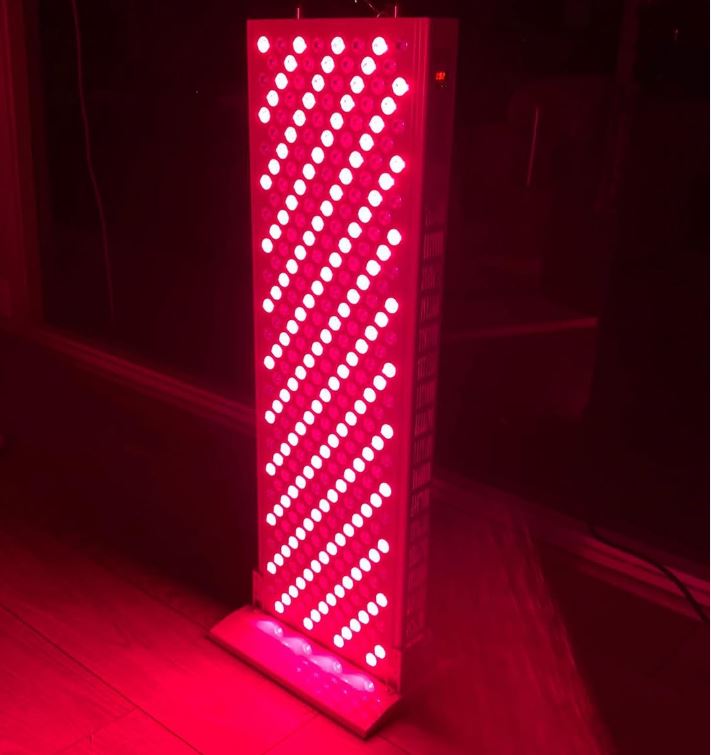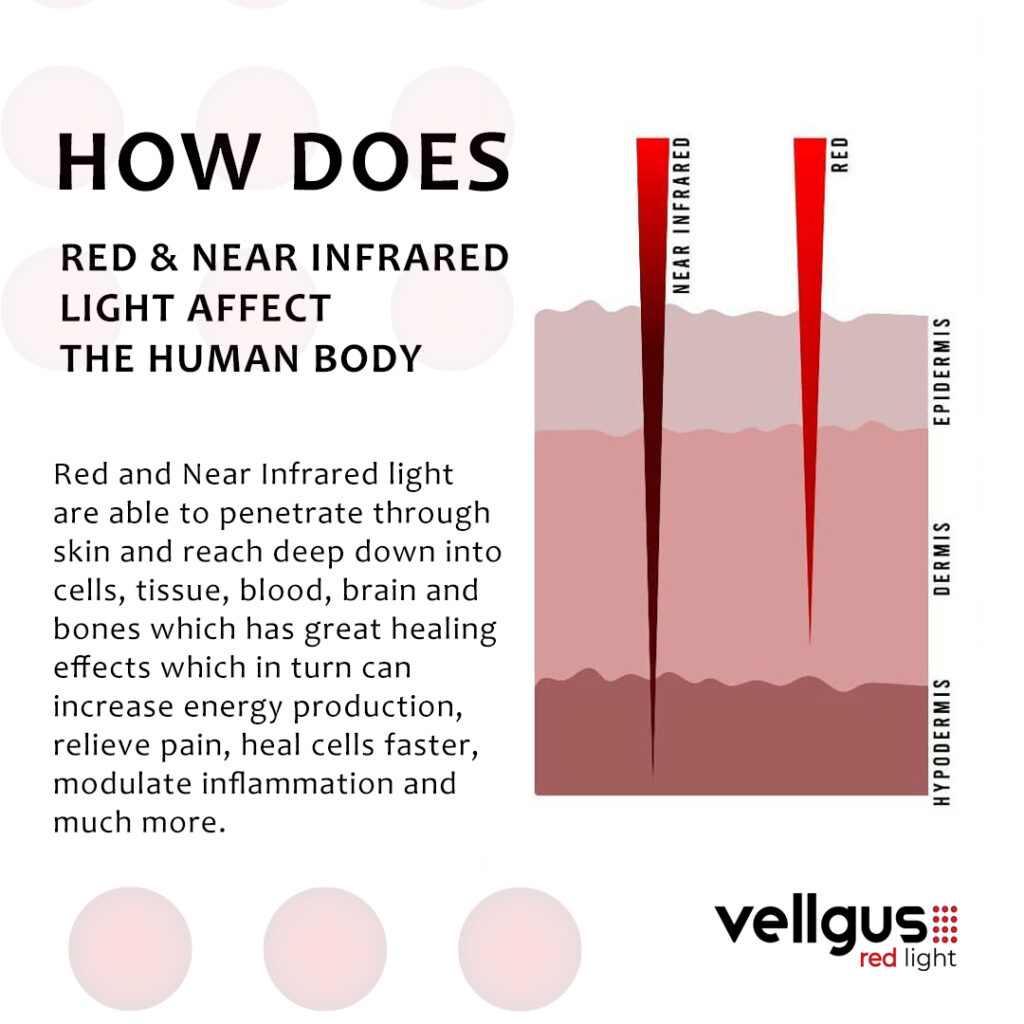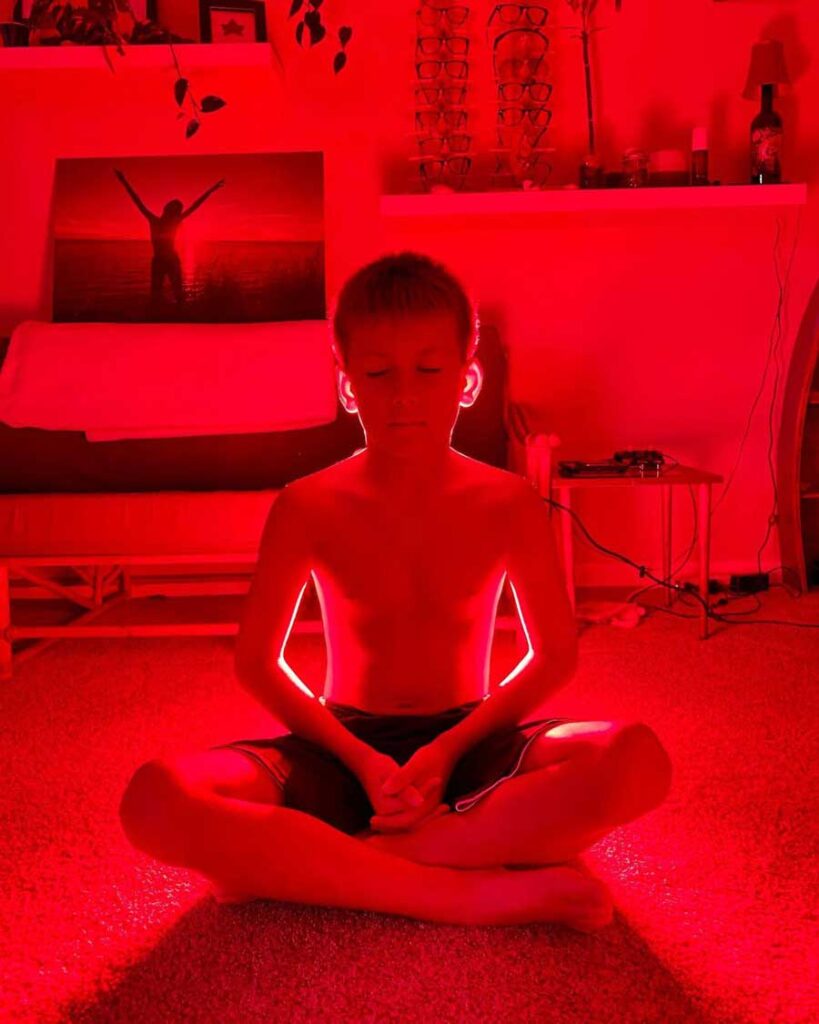![]() Free Shipping
Free Shipping ![]() Buy Now, Pay Later
Buy Now, Pay Later ![]() Eligible
Eligible
The Secret to Treating Dermatitis with Red Light Therapy

Dermatitis is a common skin condition that affects millions of people worldwide. Characterized by redness, itching, inflammation, and sometimes painful flare-ups, dermatitis can significantly impact quality of life. While traditional treatments like steroids and moisturizers offer relief, they often come with side effects or only provide temporary solutions.
But what if there was a natural, non-invasive, and scientifically backed way to soothe dermatitis symptoms and promote healing? Enter red light therapy (RLT)—a cutting-edge treatment gaining traction for its ability to reduce inflammation, accelerate skin repair, and improve overall skin health.
In this comprehensive guide, we’ll explore:
- What dermatitis is and its common triggers
- How red light therapy works on a cellular level
- The science behind RLT for dermatitis
- Real-life success stories and clinical evidence
- How to use red light therapy for optimal results
By the end, you’ll understand why red light therapy might just be the secret weapon your skin has been missing.

Understanding Dermatitis: Causes and Symptoms
Dermatitis is an umbrella term for skin inflammation that can manifest in several forms, including:
- Atopic Dermatitis (Eczema) – A chronic condition often linked to genetics and immune dysfunction.
- Contact Dermatitis – Caused by irritants (like chemicals) or allergens (like nickel or poison ivy).
- Seborrheic Dermatitis – Commonly affects the scalp (dandruff) and oily areas of the skin.
- Nummular Dermatitis – Coin-shaped patches of irritated skin, often due to dry conditions.
Common Symptoms Include:
- Red, inflamed skin
- Itching (sometimes severe)
- Dry, scaly patches
- Blisters or oozing in acute cases
Why Traditional Treatments Fall Short
Most conventional treatments focus on suppressing symptoms rather than addressing the root cause. Corticosteroids, for example, reduce inflammation but can thin the skin with prolonged use. Antihistamines help with itching but don’t repair the skin barrier. Moisturizers provide temporary relief but don’t resolve underlying inflammation.
This is where red light therapy offers a game-changing alternative.

What Is Red Light Therapy?
Red light therapy (RLT), also known as low-level laser therapy (LLLT) or photobiomodulation (PBM), uses specific wavelengths of red and near-infrared (NIR) light to penetrate the skin and stimulate cellular repair.
Unlike UV light, which damages skin, red light is safe, painless, and non-thermal, making it ideal for sensitive or inflamed skin.
How Does It Work?
When red and NIR light (typically between 630nm–850nm) is absorbed by skin cells, it enhances mitochondrial function—the powerhouse of the cell. This leads to:
✔ Increased ATP (energy) production → Faster cell repair
✔ Reduced oxidative stress → Less inflammation
✔ Boosted collagen & elastin → Stronger skin barrier
✔ Enhanced blood circulation → Better nutrient delivery
These mechanisms make RLT a powerful tool for healing dermatitis from within.
The Science Behind Red Light Therapy for Dermatitis
Multiple studies support RLT’s effectiveness in treating inflammatory skin conditions:
1. Reduces Inflammation
A 2013 study published in Lasers in Medical Science found that red light therapy significantly reduced pro-inflammatory cytokines (molecules that drive inflammation) in patients with eczema and psoriasis.
2. Accelerates Skin Healing
Research in Photomedicine and Laser Surgery (2016) showed that RLT speeds up wound healing by increasing fibroblast activity (cells that produce collagen). This is crucial for dermatitis sufferers with cracked or damaged skin.
3. Strengthens the Skin Barrier
A 2020 study in Dermatology and Therapy demonstrated that red light therapy improves skin hydration and barrier function, reducing flare-ups in eczema patients.
4. Relieves Itching & Discomfort
Because RLT soothes nerve endings and reduces histamine release, many users report less itching and irritation after just a few sessions.
Real-Life Success Stories
Many dermatitis sufferers have turned to red light therapy with remarkable results:
✅ Case Study 1: A woman with chronic hand eczema saw a 70% improvement in redness and cracking after 4 weeks of daily RLT sessions.
✅ Case Study 2: A man with seborrheic dermatitis on his scalp used an RLT cap and reported reduced flaking and itching within 3 weeks.
✅ Case Study 3: A child with atopic dermatitis experienced fewer flare-ups and less reliance on steroid creams after consistent RLT use.
These stories align with clinical findings, proving that RLT isn’t just a trend—it’s a legitimate, science-backed treatment.
How to Use Red Light Therapy for Dermatitis
If you’re ready to try RLT, here’s how to get started:
1. Choose the Right Device
- Handheld RLT devices (for small areas like hands or face)
- Panels or full-body devices (for larger areas like arms, legs, or torso)
- RLT caps or helmets (for scalp conditions like seborrheic dermatitis)
Recommended Wavelengths:
- 630nm–660nm (Red Light) – Best for surface-level inflammation and skin repair
- 810nm–850nm (Near-Infrared) – Penetrates deeper for systemic anti-inflammatory effects
VELLGUS Elite V2
THE #1 RATED RED LIGHT DEVICE
VELLGUS pro V2
THE #1 RATED FULL BODY RED LIGHT DEVICE
2. Optimal Treatment Protocol
- Frequency: 3–5 sessions per week
- Duration: 5–20 minutes per session (start slow and increase as tolerated)
- Distance: 6–12 inches from the skin
3. Combine with Other Therapies
For best results, pair RLT with:
- Moisturizers (hyaluronic acid, ceramides)
- Anti-inflammatory diet (omega-3s, probiotics)
- Stress management (cortisol worsens dermatitis)
4. Be Patient & Consistent
While some see improvements in days, others may need 4–8 weeks for noticeable changes. Stick with it!
Potential Side Effects & Safety
RLT is FDA-cleared and considered safe for most people. However:
- Avoid looking directly at the light (use goggles if necessary).
- Start with shorter sessions to avoid overstimulation.
- If you have photosensitivity disorders, consult a doctor first.
Unlike steroids or immunosuppressants, RLT has no known long-term risks, making it a sustainable solution.
Final Thoughts: Is Red Light Therapy Worth It?
If you’ve struggled with chronic dermatitis, stubborn flare-ups, or reliance on medications, red light therapy could be the missing piece in your skincare routine. Backed by science and real-world success stories, RLT offers a drug-free, non-invasive, and effective way to:
✔ Reduce inflammation
✔ Repair damaged skin
✔ Prevent future flare-ups
The best part? You can use it at home with a high-quality device, making treatment convenient and cost-effective in the long run.
Ready to Try Red Light Therapy?
If you’re tired of temporary fixes and want a long-term solution for dermatitis, consider giving red light therapy a shot. Your skin—and your sanity—will thank you!
Have you tried RLT for dermatitis? Share your experience in the comments below!








